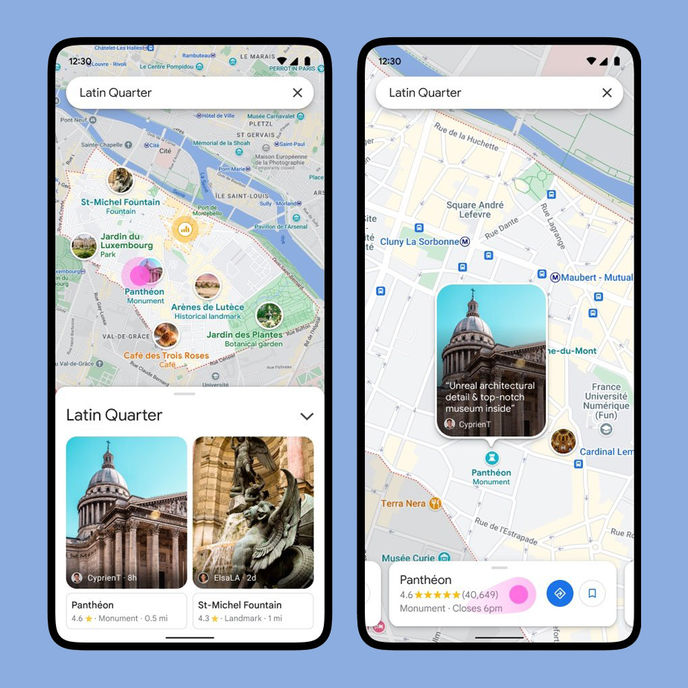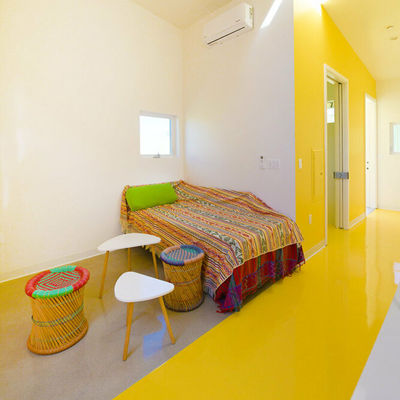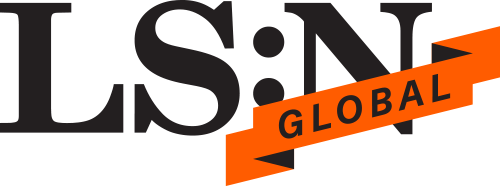14 : 10 : 22 : Weekly Debrief
This week: Climate influencer branding, Google Map’s new vibe check, an energy-saving product for pasta lovers, a community for unhoused veterans, and divergent design
1. Dall-E co-creates branding for climate influencer Isodope
Brazil – Pro-nuclear energy virtual influencer Isodope enlisted creative agency &Walsh to come up with an other-worldly visual identity, designed in tandem with Dall-E. Isodope is the online persona of influencer, model and digital fashion designer Isabelle Boemeke, which she uses to amplify her voice and to advocate for the role of nuclear energy in mitigating the climate crisis.
Tasked with designing Isodope’s branding, New York-based agency &Walsh employed AI image-generating programme Dall-E to generate unique imagery, iconography and typography. The use of AI is a way for the Isodope team to be able to dynamically change the brand elements as the conversation about nuclear energy evolves.
Isodope’s universe features a classroom from the future, meant to inspire a sense of urgency and inspiration. ‘Climate communications often get washed out. The other-worldly persona encourages people to pay attention,’ explains &Walsh.
This future-facing project is at the forefront of innovation, putting AI-vertisements to use for the purpose of climate activism through the voice of a virtual influencer.
 Google Maps
Google Maps
2. Google Maps’ new vibe check feature targets Gen Z
Global – Google Maps is about to become a lot more immersive with the addition of new features, designed to make the navigation tool feel and look like a closer reflection of the real world.
New updates will help users plan trips and get a feel of a place before visiting – what Gen Z call a ‘vibe check’. To do so, users can check out a neighbourhood’s popular spots in the app, brought to life via the pictures, videos and information that 20m Google Maps contributors upload directly each day.
In addition, Maps has launched over 250 photorealistic aerial views of landmarks, making the tool more immersive and discovery-focused. Thanks to predictive modelling, this feature also gives users information about the location of entrances and car parks and shows how busy sites are at a specific time. These features are likely to resonate with Gen Z, who favour video content and are increasingly turning to TikTok and Instagram to research places.
We recently unpacked how Data-driven Escapes are disrupting the travel landscape, and Google Maps’ latest evolutions indicate how tech-savvy consumers are further pushing disruption in the user experience.
3. Barilla launches an energy-saving product for pasta-lovers
Italy – Pasta company Barilla has released a new Passive Cooking campaign and Passive Cooker product that will help customers save on energy.
It revolves around an ancient technique to cook pasta off the heat. Instead of boiling it for 10 minutes, keeping the lid on allows the cooking to happen using only the residual heat. The new device allows users to measure the optimal cooking time and alerts them when the pasta is ready to serve. While this is a small way of reducing energy, it will encourage people to implement minor changes – and with more than 400m portions of pasta served every day it has the potential to make a difference.
The magazine ToiletPaper coordinated the art direction for the project, producing a range of saturated visuals that align with Barilla’s Italian heritage.
Barilla will also offer a WhatsApp service offering support for any passive cooking-related queries. The project invites people to embrace simple changes that could help with the cost of living and contribute to helping the environment.
4. Lehrer Architects opens community complex for unhoused veterans
Los Angeles – Lehrer Architects, an agency known for its innovative take on the housing crisis, has opened a residential complex for unhoused veterans with disabilities. The complex, designed in a striking shade of bright yellow, offers seven units, community spaces and counselling facilities.
Lehrer Architects prides itself on using design to uplift Los Angeles’ most vulnerable residents. Its signature bright colours and unique use of space are demonstrated throughout the complex. The compact units consist of a kitchenette, a private bathroom and bedroom, all featuring several windows despite their relatively small size. Shared spaces are coordinated to create an urban campus feel, a feature created to encourage communal living among the veterans.
The project's striking appeal enhances the immediate neighbourhood while focusing on community for the residents. For Lehrer Architects, beauty is rudimentary for human dignity and therefore integral to creating a space that feels safe, loving and respectful. In line with our macrotrend, Neo-collectivism, socially focused architecture will play a vital role in creating spaces fit for the future – ones that prioritise collective living and equality.
 Willowbrook by Lehrer Architects, US
Willowbrook by Lehrer Architects, US
5. Comic Sans receives a supporting campaign
Scotland – Dyslexia Scotland has launched a campaign for Dyslexia Awareness Month to urge designers to change their perspective on Comic Sans and to embrace a more inclusive design process.
While the typeface is often dismissed in the design world, the new campaign highlights the benefits for people with dyslexia, showing how it makes text easier to read. With Comic Sans as the focus, the charity hopes to spark conversations centred around creating more inclusive design. The organisation hopes the campaign, entitled There’s Nothing Comic About Dyslexia, will show how beautiful design and being dyslexia-friendly don’t need to be mutually exclusive.
The campaign faces the realities of neurodivergence and how design can shape the way people with dyslexia interact with the world. This gives designers everywhere the chance to create significant social change; we’ve tracked how some have already taken the lead to alter design to cater for those who live with neurodivergence.
To future-proof your world, visit The Future Laboratory's forecasting platform LS:N Global for daily news, opinions, trends, sector specific insights, and strategic toolkits.
Want to read more?
Become a member today!
Sign up to one of our trends intelligence platform, LS:N Global and get unlimited access to a hive of insights - from microtrends and macro trends to market reports, daily news, research across eight industry sectors and much more.
Discover our memberships
Already a member? Click here to login
